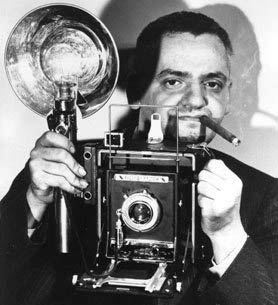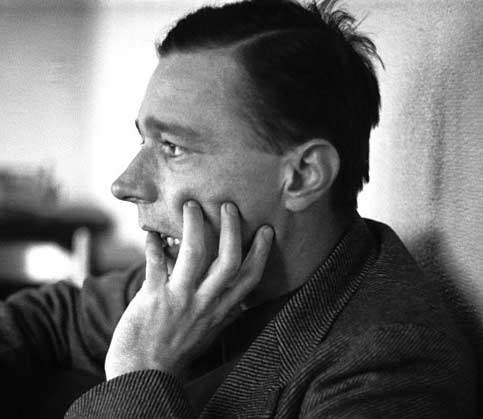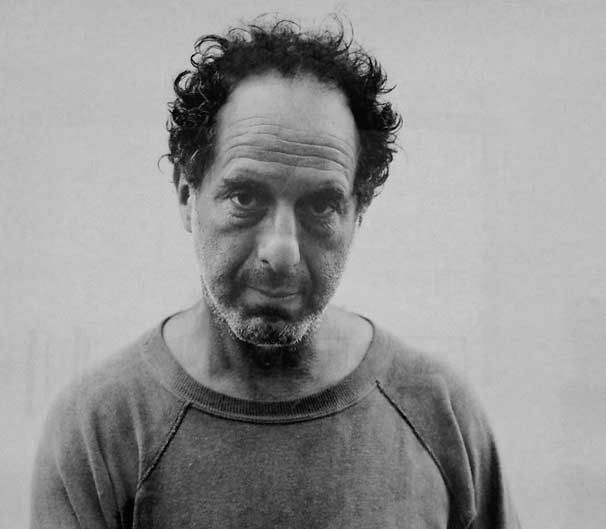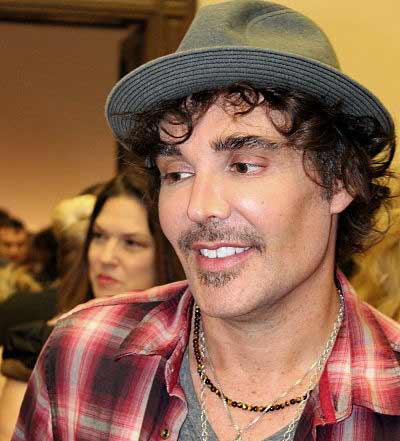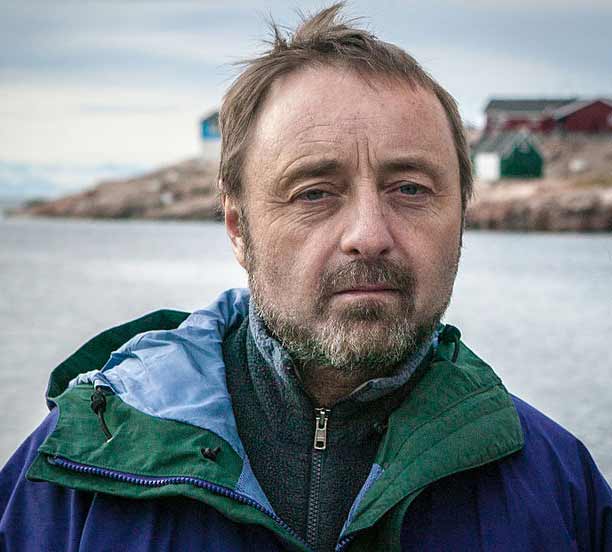Photo: https://creativecommons.org/licenses/by-sa/2.0/) by celesj (https://www.flickr.com/photos/82453281@N00/)
QUICK FACTS
Nationality: Arthur Fellig
Born: June 12, 1899
Born Place: Zolochiv, Ukraine
Died: December 26, 1968
Death Place: New York, New York, United States
On view: San Francisco Museum of Modern Art
Other name: Arthur Fellig
Gender: Male
BIOGRAPHY
Arthur (Usher) Fellig (June 12, 1899 – December 26, 1968), known by his pseudonym Weegee, was a photographer and photojournalist, known for his stark black and white street photography in New York City.
Weegee worked in Manhattan’s Lower East Side as a press photographer during the 1930s and 1940s and developed his signature style by following the city’s emergency services and documenting their activity. Much of his work depicted unflinchingly realistic scenes of urban life, crime, injury and death. Weegee published photographic books and also worked in cinema, initially making his own short films and later collaborating with film directors such as Jack Donohue and Stanley Kubrick.
LIFE
Weegee was born Ascher (later anglicized to Usher) Fellig in Złoczów (now Zolochiv, Ukraine), near Lemberg in Austrian Galicia. His given name was changed to Arthur when he emigrated with his family to New York in 1909. There he took numerous odd jobs, including working as a street photographer of children on his pony and as an assistant to a commercial photographer. In 1924 he was hired as a darkroom technician by Acme Newspictures (later United Press International Photos). He left Acme in 1935 to become a freelance photographer. Describing his beginnings, Weegee stated:
In my particular case I didn’t wait ’til somebody gave me a job or something, I went and created a job for myself—freelance photographer. And what I did, anybody else can do. What I did simply was this: I went down to Manhattan Police Headquarters and for two years I worked without a police card or any kind of credentials. When a story came over a police teletype, I would go to it. The idea was I sold the pictures to the newspapers. And naturally, I picked a story that meant something.
He worked at night and competed with the police to be first at the scene of a crime, selling his photographs to tabloids and photographic agencies. His photographs, centered around Manhattan police headquarters, were soon published by the Herald Tribune, World-Telegram, Daily News, New York Post, New York Journal American, Sun, and others.
In 1957, after developing diabetes, he moved in with Wilma Wilcox, a Quaker social worker whom he had known since the 1940s, and who cared for him and then cared for his work. He traveled extensively in Europe until 1964, working for the London Daily Mirror and on a variety of photography, film, lecture, and book projects. On December 26, 1968, Weegee died in New York at the age of 69.
LEGACY
Weegee can be seen as the American counterpart to Brassaï, who photographed Paris street scenes at night. Weegee’s themes of nudists, circus performers, freaks and street people were later taken up and developed by Diane Arbus in the early 1960s.
In 1980, Weegee’s companion Wilma Wilcox, along with Sidney Kaplan, Aaron Rose and Larry Silver, formed The Weegee Portfolio Incorporated to create an exclusive collection of photographic prints made from Weegee’s original negatives. As a bequest, Wilma Wilcox donated the entire Weegee archive – 16,000 photographs and 7,000 negatives – to the International Center of Photography in New York. This 1993 gift and transfer of copyright became the source for several exhibitions and books including Weegee’s World, edited by Miles Barth (1997), and Unknown Weegee, edited by Cynthia Young (2006). The first and largest exhibition was the 329-image Weegee’s World: Life, Death and the Human Drama, mounted in 1997. It was followed in 2002 by Weegee’s Trick Photography, a show of distorted or otherwise caricatured images, and four years later by Unknown Weegee, a survey that emphasized his less violent, post-tabloid photographs.
In 2009, the Kunsthalle Vienna held an exhibition called Elevator to the Gallows. The exhibition combined modern installations by Banks Violette with Weegee’s nocturnal photography.
In 2012 ICP opened another Weegee exhibition titled, Murder Is My Business. Also in 2012, an exhibition called Weegee: The Naked City, opened at Multimedia Art Museum, Moscow. Weegee’s autobiography, originally published in 1961 as Weegee by Weegee and long out of print, was retitled as Weegee: The Autobiography and republished in 2013.
From April 2013 through July 2014, the Flatz Museum in Dornbirn, Austria presented Weegee. How to photograph a corpse, based on relevant photographs from Weegee’s portfolio, including many vintage prints. Original newspapers and magazines, dating back to the time where the photos were taken, accompanied the photographs.
PUBLIC COLLECTIONS
- Art Institute of Chicago, Chicago, IL
- Museum of Modern Art, New York
- The Jewish Museum
- Rijksmuseum Amsterdam
- International Center of Photography
The contents of this page are sourced from Wikipedia article on 4 July 2020. The contents are available under the CC BY-SA 4.0 license.
Table of Contents
Toggle
